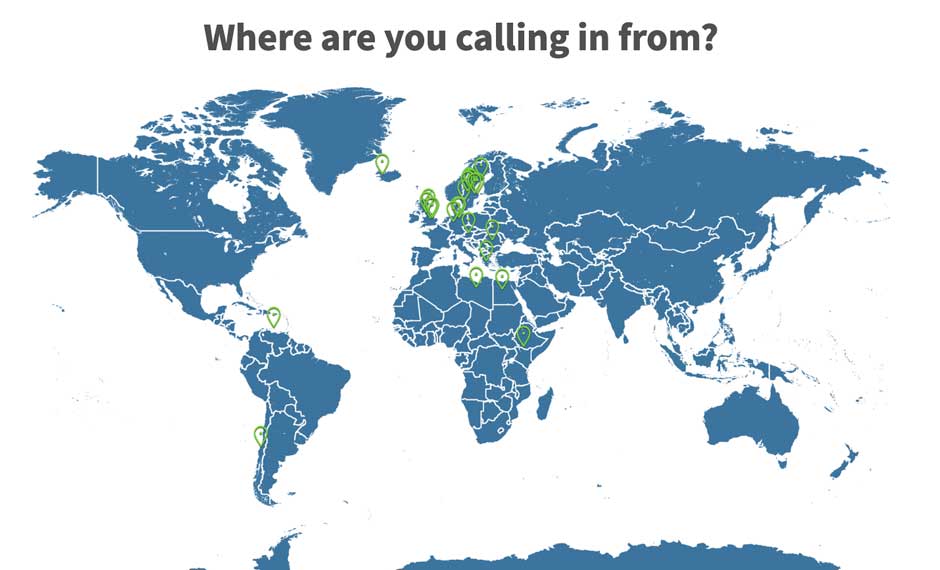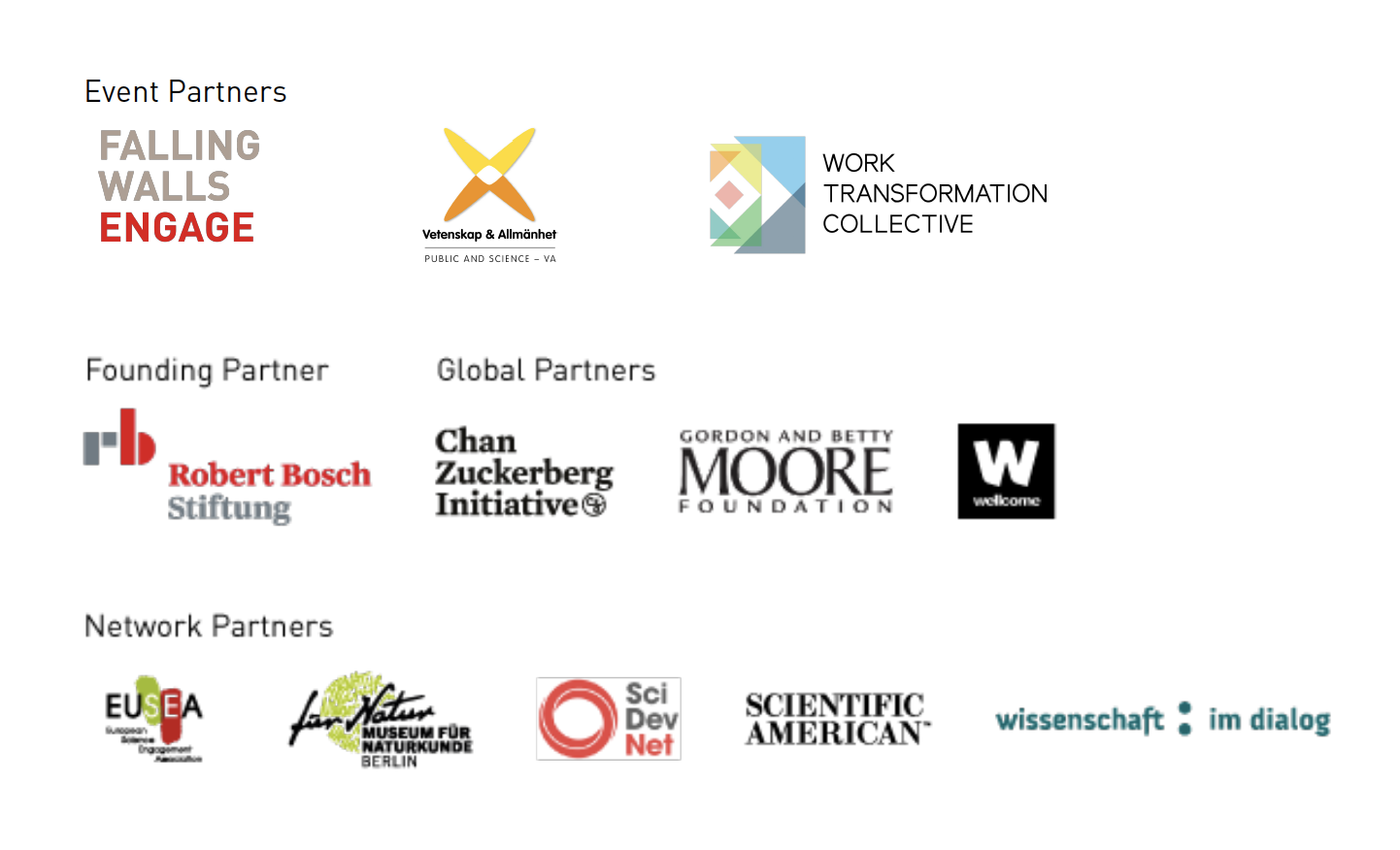The COVID-19 pandemic took us all off-guard. From one day to another cities, regions and countries closed down. Conferences, science festivals and project meetings were postponed or cancelled. Well into the preparations of our very first Falling Walls Engage Hub Sweden meeting, we quickly had to adapt to the new situation. In late April and the beginning of May, 25 science engagers from 16 countries participated in an online interactive workshop, marking the launch of the Falling Walls Engage Hub Sweden.
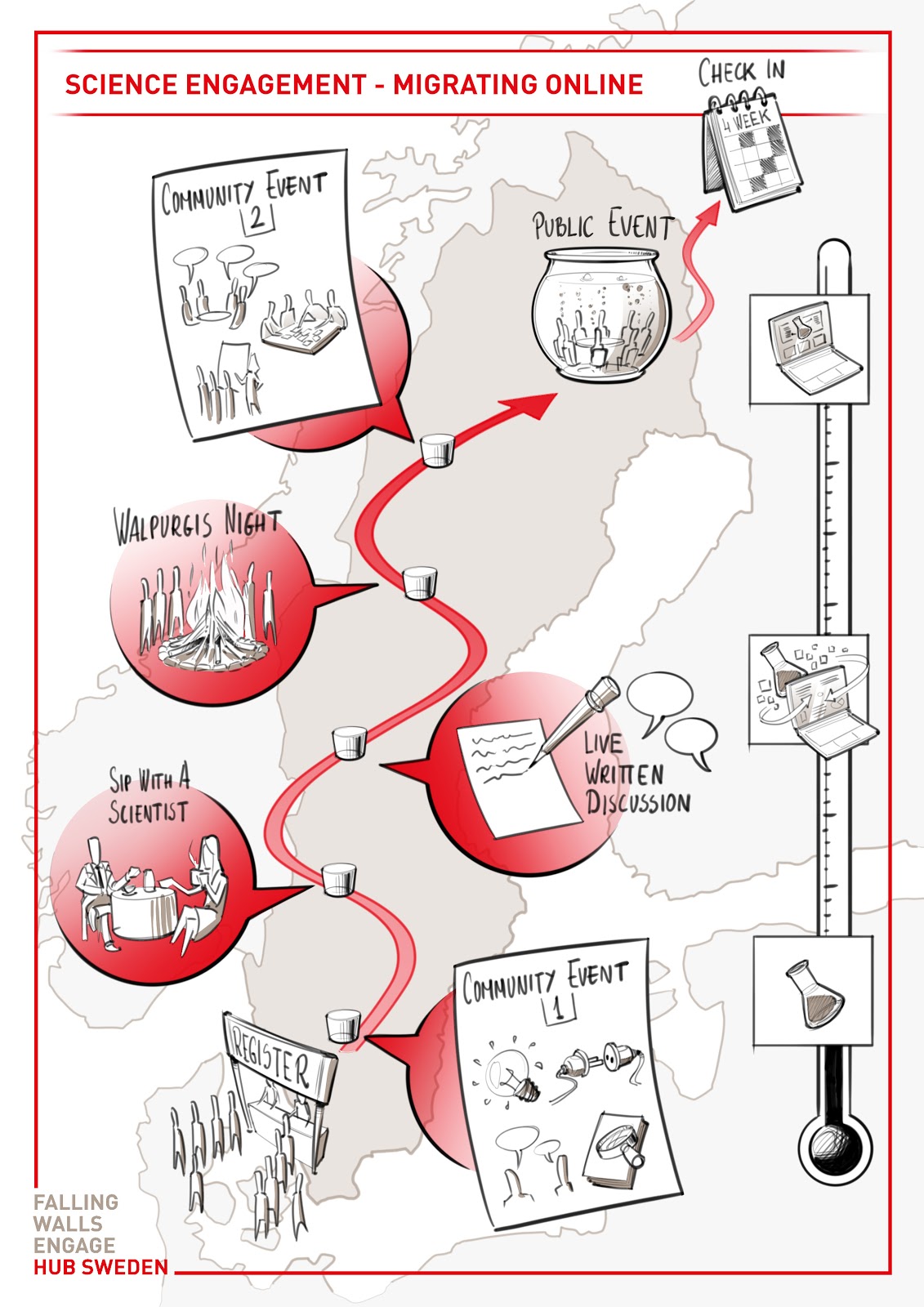
The selected participants, brought together by Falling Walls Engage, were invited to pack their mental suitcases and embark on a week-long virtual trip to Sweden. Countries from all over the globe were represented during this first hub meeting; Australia, Chile, Egypt, Finland, France, Germany, Ghana, Greece, Iceland, Kenya, Latvia, Libya, Norway, Romania, Sweden, the Netherlands and the United Kingdom.
Science engagers all over the world are now facing the challenge of transforming our science engagement activities into the digital sphere. How can we reimagine science engagement in times of crisis? The tools are there, but how do we use them to reach our audience?
Take off! Hub Sweden meets for the first time
The Hub Sweden community met for the first time on Monday 27 April in a virtual workshop to discuss the question of the day – How can we engage the public in science when we cannot meet in person? This first event was all about connection, inspiration and discussion.
During the three hour workshop science engagers discussed the pros and cons of virtual science engagement, took a look at some good examples, tried some Swedish “fika”, and met in World Café style groups to discuss:
- how to cultivate the online space together;
- reaching new audiences and where to find them; and
- reimagining science engagement in times of crisis.
After some online meditation, the event continued with a Pitch & Choose session where four engagers pitched some key challenges that they are facing. The identified challenges were:
- How can an arts-based approach be used to give voice to audiences that are underserved?
- How can we measure participants and engagement in a good way (in virtual science engagement)?
- How can we make sure that the outstanding human factors of our project can be “translated” into an online event?
- How to reach out to ‘hard to reach’ target groups, if they are not connected to the internet?
These challenges were then discussed at the second event and the findings showcased at the public event at the end of the week.
Some of the key tips that came out of the discussions included:
- Partner with organisations already doing outreach activities;
- Think about what the public wants and what their needs are;
- Take into consideration what people want when staying at home; and
- Consider both long-term (involving smaller numbers of people) and short-term (larger numbers) engagement activities.
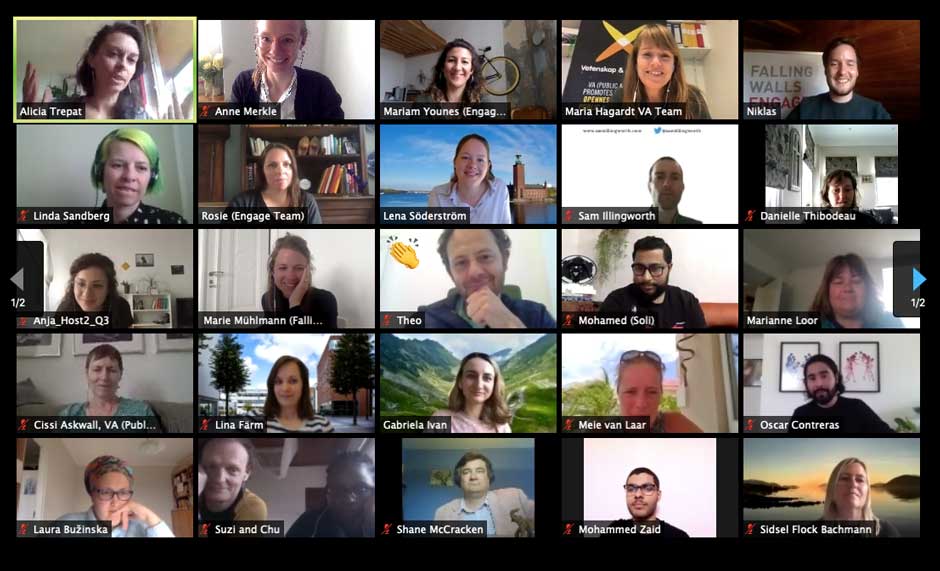
Connecting flight: Welcome to Sweden!
Since the Hub meeting was originally planned to take place in Sweden, we made sure to incorporate some Swedish traditions in the programme. First off, on 29 April, was a “Sip with a Scientist” involving PhD student Keivan Javanshiri, winner of the Swedish scicomm contest Researchers’ Grand Prix. The national coordinator of the contest, Lena Söderström, presented the concept before Keivan shared his experiences of participating in, and winning, Sweden’s largest scicomm competition.
The day after, on 30 April, Falling Walls Engage hosted a live written discussion on Facebook. This event gave participants the opportunity to exchange ideas on the event topics in a fast-paced format. The written discussion looked at how to decide whether to move science engagement activities online and examined the challenges of ensuring that online content is engaging, accessible and inclusive. Although the event was originally planned for 30 minutes, the discussions were so active that they continued for longer.
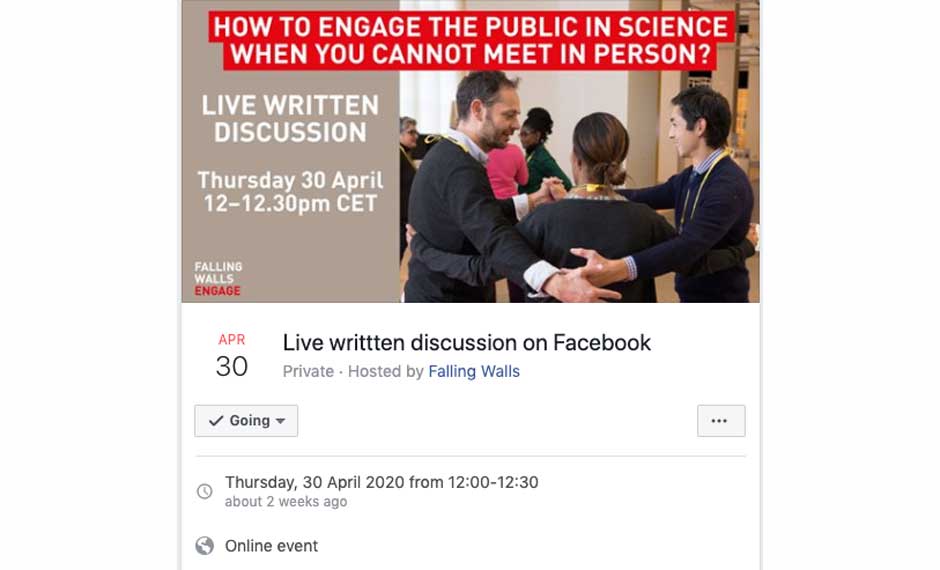
Later that afternoon, participants were told to wrap up warm and bring something to drink when they met together for a “Cultural cocktail” to celebrate Walpurgis night. Bonfires and singing were on the agenda as the community was invited to learn more about Sweden and Swedish traditions in a relaxed gathering.
Second destination: Hub Sweden continues to work together
To dig deeper into the issue of online science engagement, the community met for a second virtual workshop on the following Monday, 4 May. The event focused on inspiration and co-creation and started off with a look into science engagement in the Nordics and citizen science in a Swedish context. The group then moved into a second Pitch & Choose session, following on from the session on the previous Monday, where the selected challenges were discussed by groups in separate breakout rooms. The objective was to elaborate and find possible solutions to the challenges, with the results of the discussions to be pitched at a subsequent public event.
Overview of the breakout discussions:
- How can an arts-based approach be used to give voice to audiences that are underserved?
An arts-based approach can be an effective way to reach underserved groups. But we know there are still some challenges – we need to make sure that some groups aren’t excluded and find ways to ensure these people are made aware of initiatives.
2. How can we measure participants and engagement in a good way (in virtual science engagement)?
Quantitative evaluation is easier: e.g. general information (geographics etc.) as we can see how many are participating and how long they participate in the event. Qualitative evaluation is harder: This is where we have to find new interactive ways of gathering feedback.
3. How can we make sure that the outstanding human factors of our project can be “translated” into an online event?
There are four key aspects; Collectivity – how to engage and get to know the whole community/all participants. Online participation kit plus cultural and social activities. Intimacy – use breakout rooms for small groups and chats plus give enough time for people to get to know each other. Interactivity – this could be done through arts, drawing, theatre or dancing. Don’t forget the “fun factor”! Dramaturgy – there needs to be a thorough plan of the event to create an inspiring “arc” of action.
4. How to reach out to ‘hard to reach’ target groups, if they are not connected to the internet?
Partner with organisations already doing outreach activities. Ask what does the public want and what are their needs? What do people want when staying at home? Consider both long-term (low numbers) and short-term (high numbers) engagement activities.
Following another Swedish fika break, the community wrapped up their second workshop and got ready to open up discussions to curious peers.
It was lovely to share experiences and ideas with colleagues that are trying, as we all are, to carry on during this very strange time. It feels good to do it while we’re in it, and not just reflecting on it 6 months or a year from now.
– Participant in the hub meeting
Landing: The public joins in!
A public “fishbowl” session concluded the virtual Falling Walls Engage Hub Sweden event, where anyone interested was invited to join the exchange and discussions on how to engage the public in science offline and online during these special times. Around 120 people participated in the event. Everyone was invited to put questions to the Engage community, as well as share their own experiences and expertise. The focus of the discussion was the challenges and good practices of online science engagement, and the international engagers shared what they had learnt during the past week.
It was a much needed injection of positivity to be reminded of all the inspirational and passionate people working across the world – and a privilege to be part of that. The topic was fascinating and I think something that could be discussed for many hours. The facilitation on Zoom was fantastic and I learnt a lot from that aspect as well. – Participant in the public event
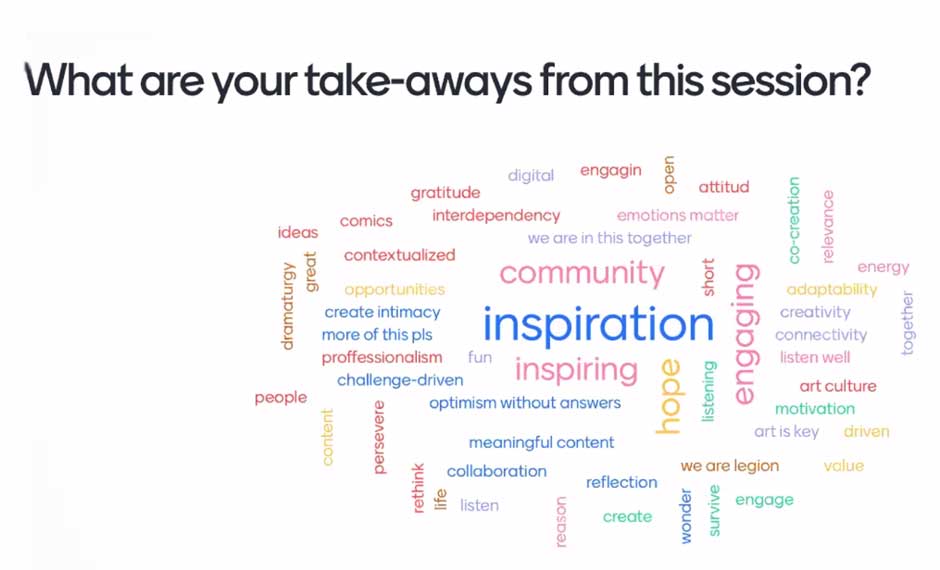
Want to learn more about the events? Read the summary!
Join the community!
The Falling Walls Engage Hub Sweden is not merely a Swedish network. Our aim is to become Hub Nordic and connect science engagers across the Nordic and Baltic countries to learn from each other and facilitate new collaborations. Do you want to join us? Please get in touch with Lena Söderström or Maria Hagardt at Vetenskap & Allmänhet.
Falling Walls Engage is a unique international platform for leaders from the worlds of science, business, politics, the arts and society. It is also a global platform for breakthroughs in science engagement. Read more.
The event was hosted by Falling Walls Engage and Falling Walls Engage Hub Sweden coordinator Vetenskap & Allmänhet and moderated by Virtual Communities for Impact.

